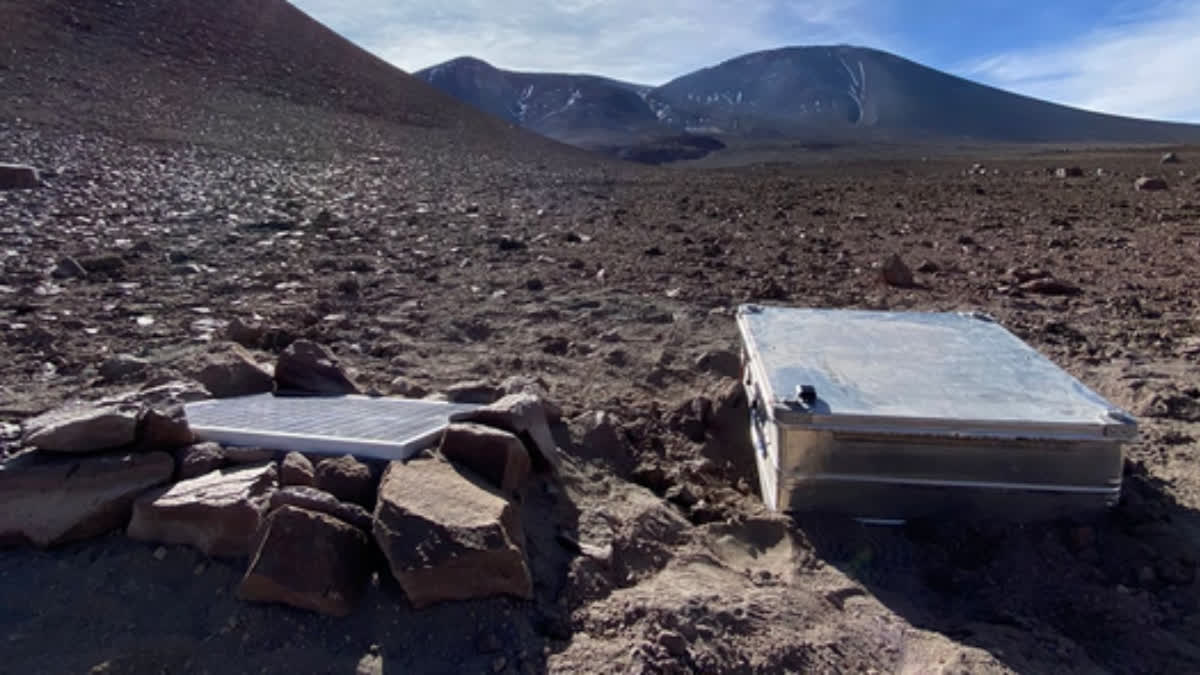New Delhi: Scientists have developed a sulphur-dioxide (SO2) camera, which makes use of a modified smartphone camera sensor sensitised to ultraviolet light to enable SO2 detection, for better long-term monitoring of rates of volcanic emissions data. Continual measuring of volcanic emissions lets researchers see what cannot be seen from the surface, the knowledge of which is vital for hazard monitoring and the prediction of future eruptions, the scientists from University of Sheffield, UK, said.
Since the mid-2000s, ultraviolet SO2 cameras have become important tools to measure gas emissions, which are a reflection of the activity occurring beneath a volcano's surface. However, the series of measurements made using these cameras need to be accompanied by a user, the scientists said, making SO2 cameras unsuitable for acquiring long-term datasets in addition to expensive building and operation costs. The result is that very few cameras are being installed permanently, they said.
"Our instrument uses a sensor not dissimilar to smartphone camera sensors. It is modified to make it sensitive to ultraviolet light, therefore enabling SO2 detection," said Thomas Wilkes, lead author of the study. The scientists' SO2 camera, the design of which along with a couple of initial datasets is published in the journal Frontiers in Earth Science, is significantly cheaper and uses less power relative to previous models, they said.
Also read: Wastewater provides for ideal breeding ground for antibiotic resistance
"Wherever possible we 3D print parts too, to keep costs as low as we can," Wilkes explained. "We also introduce a user-friendly, freely available software for controlling the instrument and processing the acquired data in a robust manner." He said that the affordability and user-friendliness makes the camera accessible to more volcanologists, who otherwise might not have access to datasets containing accurate gas emission rates.
Further, the camera's power consumption being low at an average of 3.75 Watts, is half of what was needed to power previous models, they said. The use of their camera, running on fewer or smaller solar panels or batteries, could be beneficial on sites where there is little solar power to be harnessed.
Even as there are other such emissions measuring instruments, "the SO2 camera can provide higher time- and spatial-resolution data which could facilitate new volcanological research when installed permanently," said Wilkes. Their camera, they said, is in continuous operation at a stratovolcano in Lascar, Chile and at a shield volcano on Hawaii's Big Island Kilauea. Wilkes and his team have published their datasets from these locations.
"Before now, only three volcanoes have had permanent SO2 cameras installed on them," Wilkes said. "Discrete field campaigns have been carried out, and whilst they can be invaluable for a range of research questions, it is important to be able to measure volcanic activity continuously, since it can vary substantially from minutes to decades to centuries and beyond," said Wilkes. Being dependent on meteorological conditions, the cameras work best under clear blue skies when the volcanic gas plume moves in a 90-degree angle to the viewing direction of the camera, which could be a limitation, the researchers said. (PTI)



